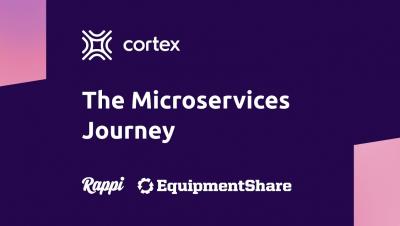Operations | Monitoring | ITSM | DevOps | Cloud
Microservices
The Ultimate Crash Course on Microservices: The 5 Key Questions and Answers to Know in 2022
Over the past decade, organizations have reinvented themselves through digital transformation. Nowadays, this journey is well in its second chapter and gaining momentum – also driven by the explosion of app and service deployment, data and intelligence, digital reach, and post-pandemic customer expectations. And the newest cutting-edge technological trends – such as hybrid infrastructure and edge computing – are making it particularly difficult for traditional tools to keep up.
Microservice Monitoring Tools + Best Practices
Microservices are one of the hottest app architectures in the current market. They easily solve some of the most common problems with monolithic and service-oriented architecture. The ability to split your application into multiple smaller components and develop as well as monitor them individually opens up a whole new world of possibilities. However, this also brings with it a new set of problems. Monitoring distributed applications requires thinking outside of the box.
Setup RabbitMQ in HA Mode using Kubernetes Operator
Organizations are moving from monolithic architecture (where all the code building the application exists as a single, monolithic entity) to microservices architecture as it simplifies app management, making it easier to build, deploy, update, test and scale each service independently without affecting other parts of the architecture.
Optimize Continuous Delivery of Micro-Services Applications with Continuous Performance Testing
I often hear from customers who complain about how “classic” performance testing (i.e., end-to-end testing with high volume of virtual users) of their applications before release slows down the cycle time by several weeks. In addition, the testing significantly consumes both people and infrastructure (hardware and software license) resources.
Monitoring Cloud Native Microservices
Today’s modern applications contain a broad set of microservices, with containers and serverless becoming the architectures of choice for many cloud applications. Both architectures facilitate highly scalable systems, and while which approach to take is routinely debated, containers and serverless technologies are being used in tandem more and more.
Tools for tracing microservice architecture
How to Test Microservices in Kubernetes
In this article, you will learn about some of the tools to test microservices running in a Kubernetes cluster. In particular, we will compare the Speedscale CLI tool with other tools and the main benefits of using Speedscale CLI. In the last few years, software companies have been shifting from building monolith applications to utilizing smaller microservices. In a microservices architecture, you operate with decentralized applications. This means that there's a separation in which each service is responsible for a specific component of your application.
Concurrency in Golang: Building a Data Pipeline for Monitoring Microservices from Scratch
Time and resource consumption have become the driving forces of developing modern applications. While building cloud-native applications, it’s important to ensure that you have the most optimized code in place, and oftentimes that means leveraging concurrency. While writing concurrent code may sound overwhelming at first, Golang makes it extremely easy to get a handle on.











